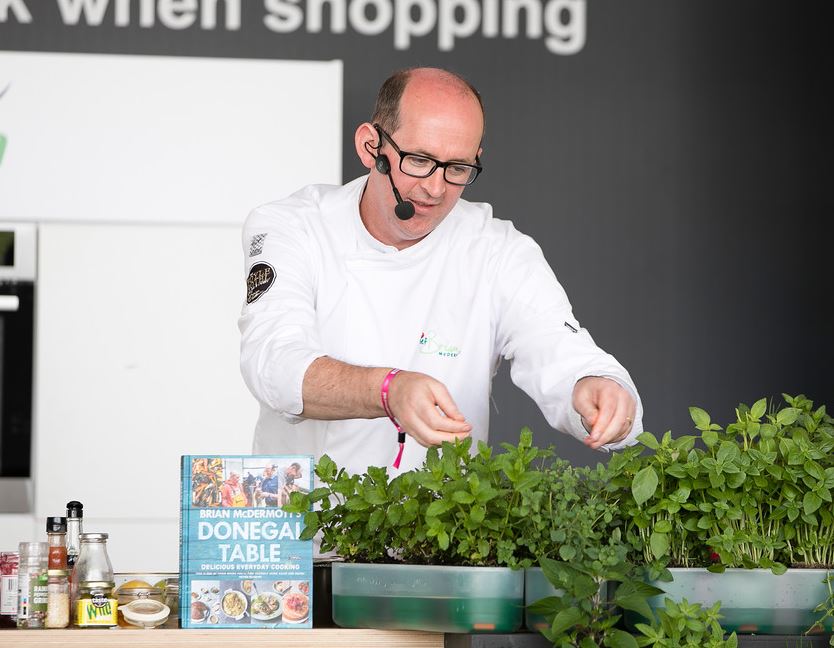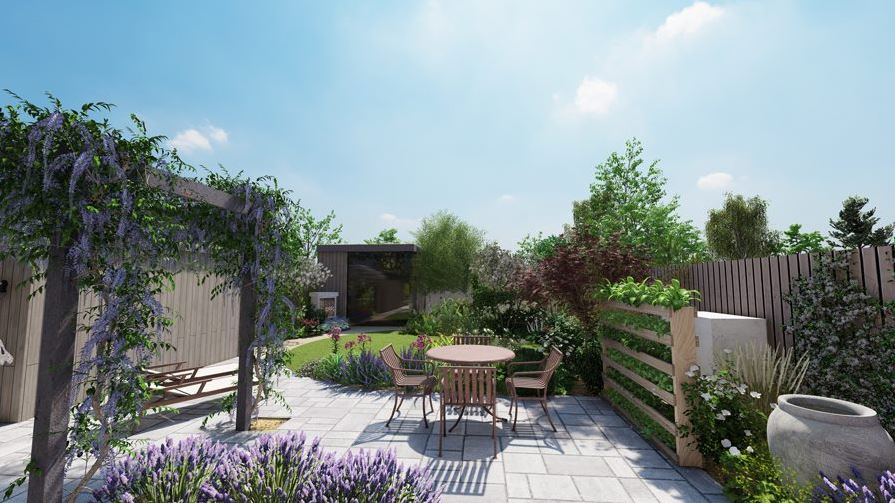

Tree Planting Tips with Landscape Architect Maeve O’Neill

Maeve O’Neill is a landscape architect, sculptor, former art teacher and design fellow in UCD and founder of Realise Landscape Architects. She has won a number of awards at Bord Bia Bloom including a Gold Medal in 2019. Maeve designed the family themed Easy Steps to Dream Gardens, and to celebrate National Tree Week 2024, Maeve gave us her top tree-planting tips!
What tree would you recommend for a small garden?
You could use a Crataegus monogyna, a native hawthorn, which is a very attractive small tree/bush and one of the most wildlife-friendly trees you can grow. It’s very familiar to us in our Irish hedgerows. Clusters of pink or white blossoms appear in spring, with berries following in the autumn. Due to its thorny form, they provide an excellent habitat for roosting or nesting birds.
Follow Maeve on Instagram to keep up with all of her latest projects!
What tree would you recommend for Spring interest?
We’ll be using a multi stemmed Amelanchier lamarckii in our Family themed Dream Garden in Bloom this June. We love it because of its varied seasonal interest and light crown. In Spring the tree becomes alive with buds that will burst into fluffy star-shaped flowers. The leaves will vary in colour from a coppery pink colour to a yellow green colour in summer. As autumn comes, leaves transform into vibrant shades of red and crimson before dropping off. By July, the tree is covered in dark red berries that turn purple-black as they ripen. Great for bees and other pollinators. Spend time selecting the right form – an interesting multi stem with wavy sinuous stems.
What tree would you recommend for Autumn colour?
Acer Freemanii ‘Autumn Blaze’. It’s a beautiful, tough tree for shade with a display of orange/ rich red coloured leaves in Autumn.
Its round canopy will reach a height of between 12 and 20 meters with a spread of approximately 8 meters. So it’s a big one, for a large space. It has beautiful, varied leaf colours throughout the seasons.
Top tips when planting a tree:
- Choose a tree species that suits your local climate and soil conditions, have a look at your neighbours gardens and see what grows well.
- Consider the available space and how much sunlight the area receives.
- Dig a hole that’s about twice as wide as the tree’s root ball and just as deep.
- Loosen the soil at the sides of the hole to help the roots establish.
- Place the tree in the centre of the hole. The top of the root ball should be level with the surrounding soil.
- Adding mycorrhizal fungi when planting helps the tree absorb more nutrients from the soil.
- Backfill the hole with the soil you removed, packing it gently around the roots.
- Water the tree well immediately after planting. Make sure to keep the soil consistently damp throughout the first year, especially when it’s not raining to help the tree grow.
- A good rule of thumb is to stake the tree if they are taller than 5 or 6 feet. The stake should be about one-third the height of the tree. For example, if the tree is 9 feet tall, use a stake that is around 3 feet.
- Place the stakes outside the area where the roots are, generally around 1 to 2 feet away from the tree trunk. When putting them in the ground, angle the stakes away from the tree.
- Apply a good layer of mulch around the bottom of the tree, leaving some space around the trunk. Mulching locks moisture into the soil and will often contain nutrients that can act as slow-release plant food. It also has the added benefits of suppressing weeds.
Follow Maeve on Instagram to keep up with all her latest projects!











